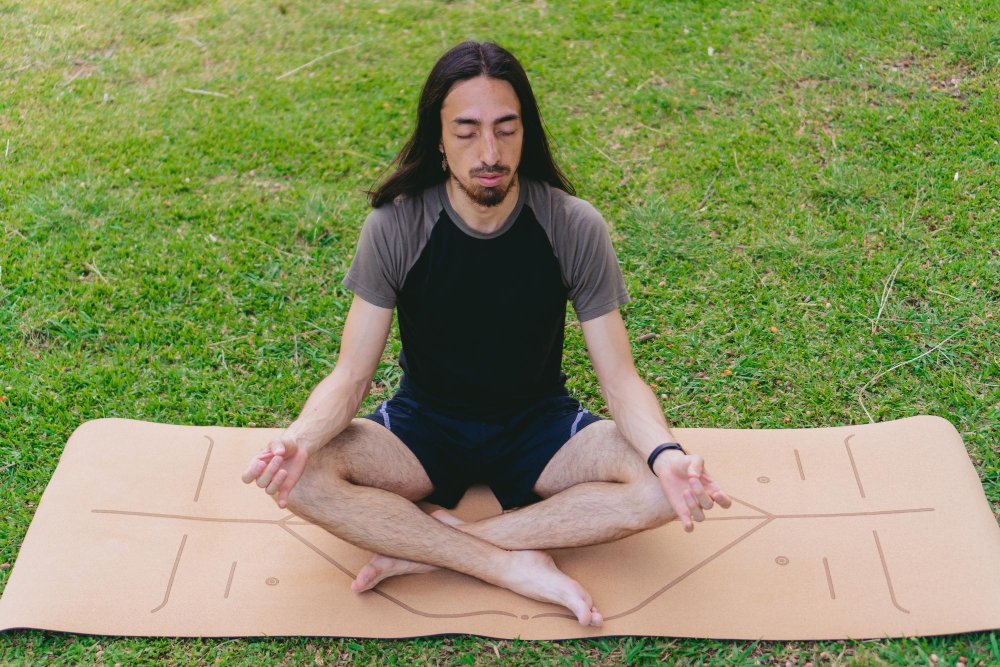Unravel the reason behind tears during meditation because understanding this phenomenon could be a key to deeper self-awareness and emotional release.
Experiencing tears during meditation is a common occurrence that many practitioners face. This emotional release is often a sign of unresolved emotions coming to the surface, serving as a healing process that helps in achieving a deeper state of mindfulness.
In the following sections, you’ll discover the reasons behind this phenomenon, the benefits it offers, and how to navigate through these emotional experiences for a more profound meditation practice.
The information provided is based on reliable research and expert insights, ensuring a comprehensive understanding of the topic.
Key takeaways:
- Tears during meditation are a common occurrence.
- Emotional release during meditation helps achieve deeper mindfulness.
- Crying is a sign of unresolved emotions coming to the surface.
- Meditation promotes emotional balance and resilience.
- Seek professional help if emotional release becomes overwhelming.
Emotional Release During Meditation: An Overview

Meditation is a way of accessing our deep inner world where a vast range of feelings, from joy to grief, reside. In this tranquil state, we might unearth suppressed feelings or unresolved experiences that stir strong emotional reactions, often leading to tears. It’s a natural part of the process, not a signal of distress, rather seen as a form of healing.
1. Cracking the shell: Emotions could be hidden under the surface, and the quiet intensity of meditation may make these feelings bubble up, resulting in tears.
2. Emotional purge: Some meditators describe crying as an emotional detox, a release of pent-up feelings, and a way to cleanse the soul.
3. Greater self-awareness: Meditation helps us to seek inner depths, leading to heightened self-awareness. This newfound awareness can stir up emotional responses.
4. Symbol of release: Crying is not only about sadness or grief; it’s also a physiology-driven response indicating the release of emotions and opening up of heart.
Remember, experiencing a gamut of emotions, including shedding tears during meditation, symbolizes growth and healing in your mindfulness journey. Absorb and honor them. It’s a sign of the transformative power of meditation.
The Connection Between Meditation and Emotional Health

Meditation, a practice enhancing mindfulness and awareness, plays a pivotal role in maintaining emotional health. By directing focus towards breathing and bodily sensations, it encourages release from the constant whirl of thoughts and helps in achieving a tranquil state of mind.
1. Mindfulness: By fostering a present moment awareness, meditation aids in acknowledging and accepting feelings without judgement.
2. Stress reduction: Regular meditation decreases stress hormone levels, promoting emotional balance and a relaxed state of mind.
3. Emotional resilience: Through enhanced self-awareness, meditation helps in understanding emotional patterns, thus bolstering emotional resilience.
4. Emotional Regulation: Meditation develops the ability to regulate emotions, reducing reactive and impulsive responses.
5. Inducing positive emotions: Regular practice cultivates positive emotions like empathy and happiness, supporting overall emotional well-being.
Remember, everybody’s meditation experience is unique. Regular practice yields better results over time. Be patient with yourself and trust the process.
The Role of Meditation in Emotional Cleansing

Meditation, in essence, opens a door into the vast corridor of self-discovery. When practiced correctly, it allows you to explore and get in tune with your deepest emotions, including buried or suppressed feelings. This process is an integral part of emotional cleansing.
Here are few key points to understand:
- Brings buried emotions to the surface: Sitting quietly, focusing inward during meditation often brings out emotions that are usually set aside or hidden. This is a healthy process that aids emotional detoxification.
- Spans across the emotional spectrum: Every emotion, whether positive or negative, carries a certain energy. By turning your attention inwards, you allow these feelings to be acknowledged and processed, leading to emotional balance.
- Promotes self-understanding: By paying gentle attention to these emerging feelings, you can gain insights into personal emotional patterns and triggers, which in turn helps in better management and transformation of these emotions.
- Fostering emotional resilience: Regular meditation trains your brain to face these emotional hurricanes with calmness, enhancing your ability to cope, bounce back, and heal.
- Encourages self-love and acceptance: Meditation is a safe space to accept and respect what you’re feeling without judgment or resistance, fostering self-kindness. This builds a foundation for healing and emotional growth.
The emotional cleansing through meditation isn’t an overnight journey. It’s continuous and progressive, but each step brings you closer to a more emotionally healthy and balanced version of yourself.
Breaking Down the Science: Why Crying Occurs During Meditation

When meditating, you intentionally delve into the realm of subconscious thoughts and feelings that often remain unaddressed. This deep introspection can lead to emotional release in the form of tears.
Firstly, meditation prompts your mind to shift from the normal conscious state into a more relaxed, serene state. This transition allows unresolved emotional matters to surface from your subconscious.
Secondly, this profound and holistic process might trigger the tears response due to the stirring or unearthing of suppressed feelings, creating an outlet for emotional release.
Thirdly, meditation promotes emotional integration, which can elicit tears. The release is a healing response that helps you create a harmonious emotional balance.
Lastly, the sensation of peace and connection experienced during meditation can be intensely profound, thereby leading to what is commonly referred to as ‘tears of bliss’.
Remember, shedding tears during meditation is not a sign of failing or doing it wrong but a testament to the profound impact the practice has on our emotional well-being.
Approaches and Techniques for Managing Emotions During Meditation

Emotions can be both powerful and overwhelming, especially when experienced during a meditative state. Having the right techniques in place can help in effectively managing these emotional outbursts:
1. Awareness: Understanding that emotions are temporary and accepting them is the first step towards emotional resilience. Practicing non-judgmental observation of your feelings provides needed perspective.
2. Deep Breathing: Whenever emotions surface during meditation, focus on your breath. Deep, slow breathing helps reduce stress and can create a soothing effect, offering immediate relief.
3. Visualization: This effective mindfulness technique encourages you to imagine your emotions as transient entities, like waves or clouds. Watching them rise and recede can provide a feeling of control.
4. Mantra Repetition: Repeating a calming or empowering phrase can be a centering practice. It helps distract the mind from the emotion’s intensity, bringing back focus to the meditative state.
Remember, each individual’s experience with meditation varies. Hence, the most effective technique might differ from one person to another. Experiment with each technique to find what works best for you.
Importance of Self-Compassion in Meditation

Practising self-compassion during such moments is fundamental. It involves acknowledging your emotions without judgment. Here are some key ways to achieve that:
- Acknowledge Your Feelings: Embrace your feelings, even if they are uncomfortable, and allow yourself to experience your emotions fully.
- Avoid Self-Criticism: Don’t reproach yourself for crying. It’s a natural response to emotional release and it’s okay to express your feelings.
- Patience: Have patience with the process. Emotions will surface at their own pace.
- Be Gentle: Treat yourself with kindness. Remind yourself that everyone experiences emotional upheavals, you are not alone.
- Mindful Pause: If you’re overwhelmed, take a mindful pause. Take some slow deep breaths and consider lowering your meditation session times until you feel more comfortable.
Remember, meditation isn’t about achieving a state of eternal bliss, but about facing oneself, with all the complexities of human emotions. Hence, nurturing self-compassion is a crucial piece of the journey.
Recognizing When to Seek Professional Help

Sometimes, the emotional release experienced in meditation can feel overwhelming. This might be a signal that deeper emotional or psychological issues are at play. While meditation is a profound tool for self-exploration, it is not a solitary solution for all mental health challenges.
Here are few signs that may indicate the need for professional assistance:
- 1. Persistent Feelings of Anxiety or Depression: If your meditative practice regularly results in intense feelings of anxiety or depression, it might be beneficial to speak with a mental health professional. These feelings can be indicative of more deep-rooted issues that need addressing.
- 2. Inability to Function Normally: If your emotional responses from meditation are hampering your daily life and routines, this is a strong sign that seeking professional help could be beneficial.
- 3. Emotional Overwhelm: While it’s normal to experience emotional release during meditation, it becomes a concern when it’s regularly overwhelming, causing severe emotional distress, or leading to harmful thoughts.
- 4. Past Traumatic Experiences: If your meditation sessions consistently bring up past traumatic experiences that affect you heavily, you should consider seeking assistance from a trained professional.
Remember, there’s no shame in seeking help when necessary. Mental health professionals can provide helpful tools and therapeutic strategies to manage these experiences effectively. Working in tandem, meditation and therapy can foster a more internally peaceful life.
FAQ
What does it mean if you cry during a meditation?
Crying during meditation signifies your growing self-awareness, indicating a connection with your emotions and potentially signifying an exploration of previously unresolved emotional aspects.
Why do tears come out when I meditate?
Tears may appear during meditation as a result of an activated parasympathetic nervous system, demonstrating that your body is in a state of deep relaxation, but it’s not necessarily a sign of crying.
Is it normal to feel like crying after meditation?
Yes, it is normal to feel like crying after meditation as it is a sign of healing, processing emotions, and a functioning meditation practice.
Does meditation release trapped emotions?
Yes, meditation effectively serves as a conduit for releasing trapped emotions by fostering a healthier, more positive relationship with our emotions.
What is the connection between emotional release and meditation?
Meditation fosters a heightened awareness of emotions, enabling their release in a controlled and therapeutic manner.
How does meditation help to release pent-up emotions leading to tears?
Meditation gives individuals the space to connect deeply within themselves, often prompting the release of pent-up emotions that can surface as tears by lowering defenses and promoting emotional awareness.
Can regular practice of mindfulness meditation bring emotional stability?
Yes, regular practice of mindfulness meditation can lead to emotional stability by training the brain to focus on the present moment, reducing stress, and enhancing mental tranquility.